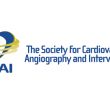SOLACI endorses SCAI’s document on Best Practices in the Cardiac Catheterization Laboratory. This clinical expert consensus statement pertains specially to diagnostic and therapeutic coronary artery procedures. It contains: Institutional and Operator qualifications and components of an optimal CCL procedural team, pre procedure best clinical practices with an updated pre-procedure checklist for cardiac...
Early Activation to Speed-Up Treatment of Infarcted Patients
Cath lab activation—and everything that entails—within 20 minutes was associated with the target of performing primary angioplasty in under 2 hours in at least 75% of patients. Historically, door-to-balloon time was measured, which provided a rough idea of where there could be flaws to fix. This is particularly true in the case of patients who need to...
Is Hybrid Operating Room Necessary for Safe TAVR
According to this sub-study of the FRANCE TAVI registry, mortality is similar for transcatheter aortic valve replacement in hybrid operating rooms vs. conventional catheterization labs. These findings support performing TAVR in conventional cath labs, which goes hand in hand with TAVR expansion, with improved logistics and organization costs. This study compared outcomes of patients undergoing...
Is the Obesity Epidemic Putting Patients’ and Physicians’ Health at Risk?
Is the Obesity Epidemic Putting Patients’ and Physicians’ Health at Risk? In addition to the obvious negative effect on patients, obesity can also affect Interventional Cardiologists’ health, seeing as it involves increased exposure to radiation. Operators are clearly and increasingly exposed to radiation as patient body mass index (BMI) increases. Radiation exposure might be...
Keys to Productivity Improvement in the Cath Lab
The systematic reduction of inefficiencies in the catheterization laboratory (such as the improvement of lab room start times and room turnaround times) can definitely improve the productivity of a Department of Interventional Cardiology without forcing its members to stay in the facilities longer. As a matter of fact, work can be finished even faster with...
On Radiation Protection: Editorial comment by Dr. Ariel Durán
Courtesy of Dr. Ariel Durán. I am pleased to witness the increased amount of scientific papers in high impact journals addressing topics related to radiation protection or the harmful effects of radiation on our patients and primary or secondary operators. Similarly, it is my pleasure to see that SOLACI has acknowledged this growing concern by...
Protective Shield RADPAD Reduces the Radiation Dose Received by Operators in the Cath Lab
Despite technological developments, all people working at a cath lab are inevitably exposed to radiation and its effects. The radiation dose received by the operator is highly variable depending on procedure type, experience level, equipment used, patient characteristics, etc. Exposure to this scatter radiation may have deterministic effects, such as the onset of cataracts or...
DETO2X-AMI: Supplemental O2 Provides No Benefit for Patients with Suspected Infarction
According to this study simultaneously presented at the European Society of Cardiology Congress 2017 and published in the New England Journal of Medicine, routinely providing supplemental oxygen therapy to patients without hypoxemia with suspected acute myocardial infarction did not result in a reduction in the 1-year risk of all-cause mortality when compared with patients receiving...
Occupational Hazzard in the Cath Lab
Original Title: Occupational Health Risks in Cardiac Catheterization Laboratory Workers. Reference: Maria Grazia Andreassi et al. Circ Cardiovasc Interv. 2016 Apr;9(4). Orthopedic lesions and radiation exposure are among the health risks Cath Lab staff take. However, the potential occupational hazard in quantitative terms is still unclear. The purpose of this study was to examine the...
- 1
- 2








